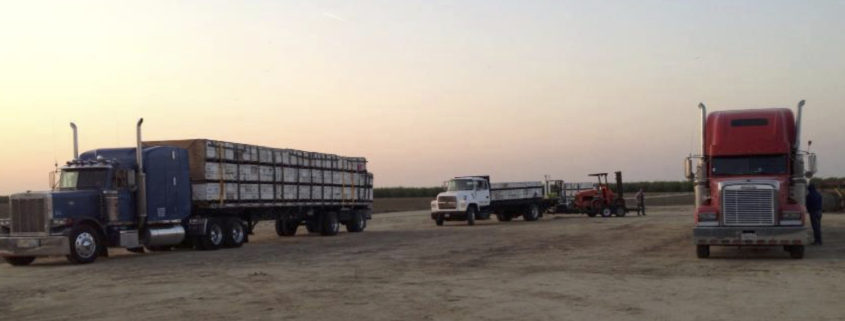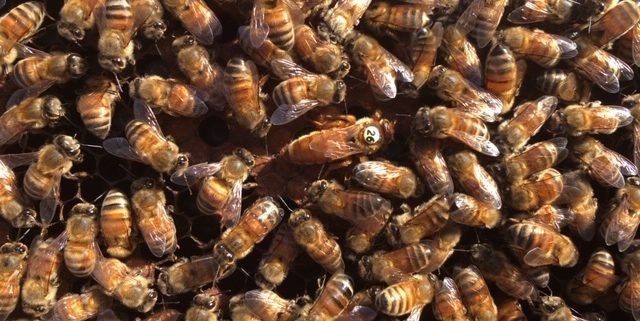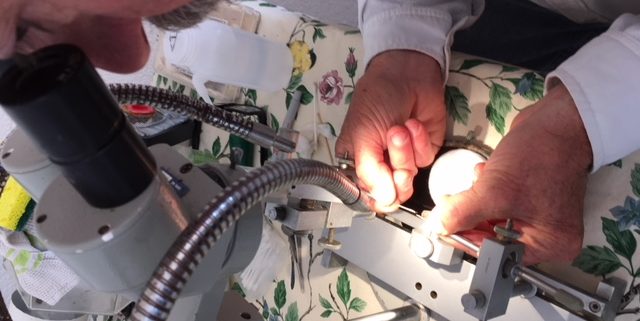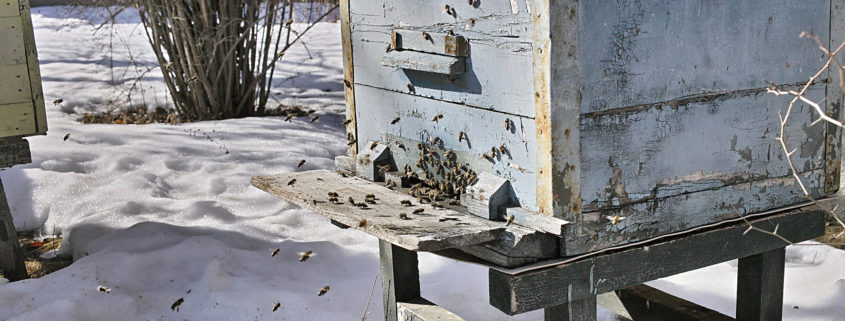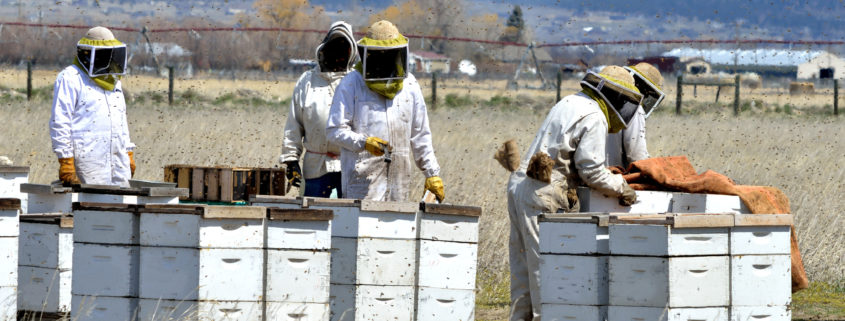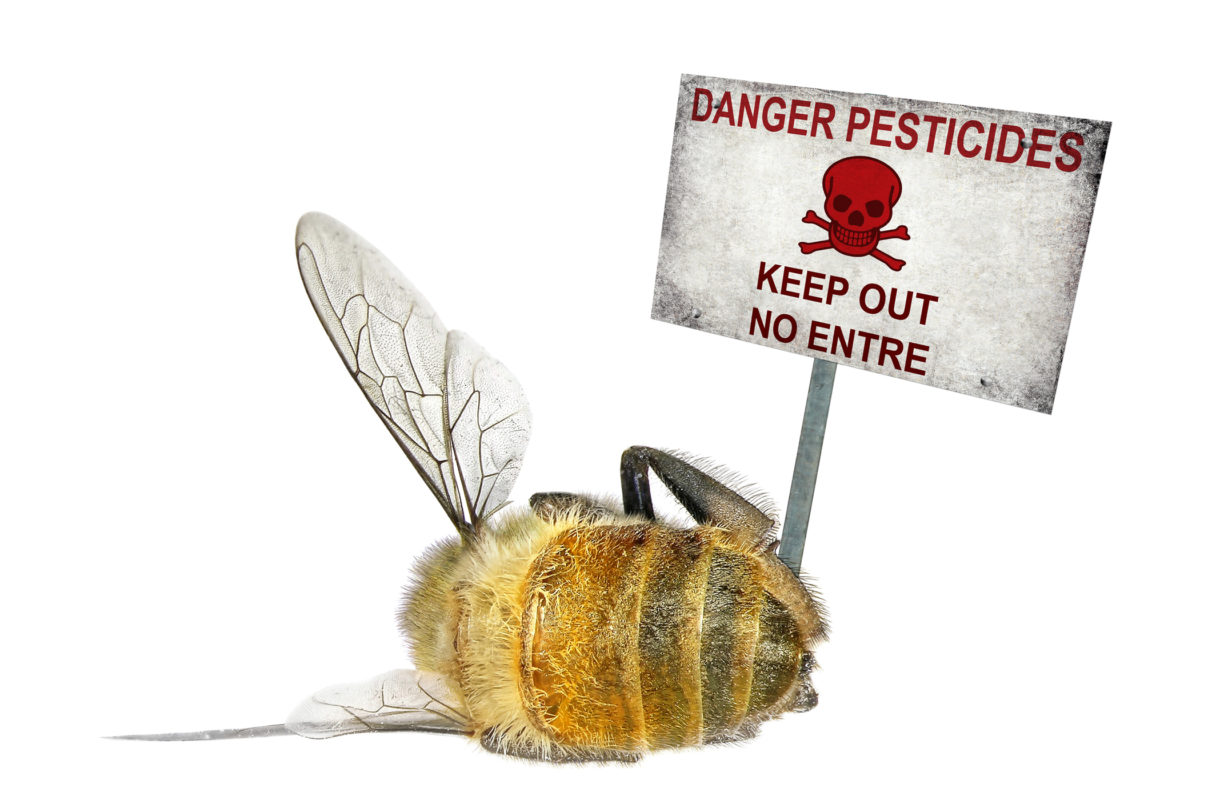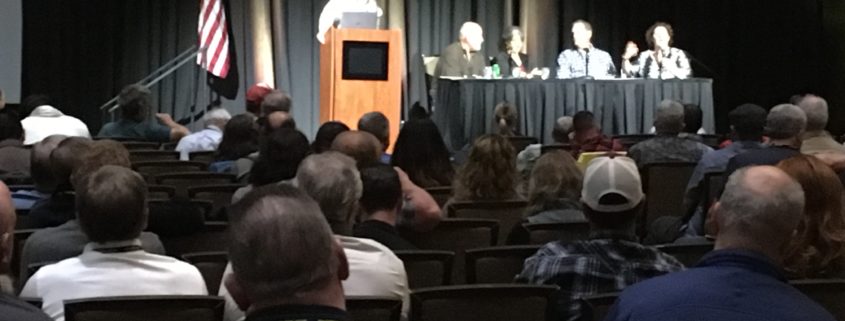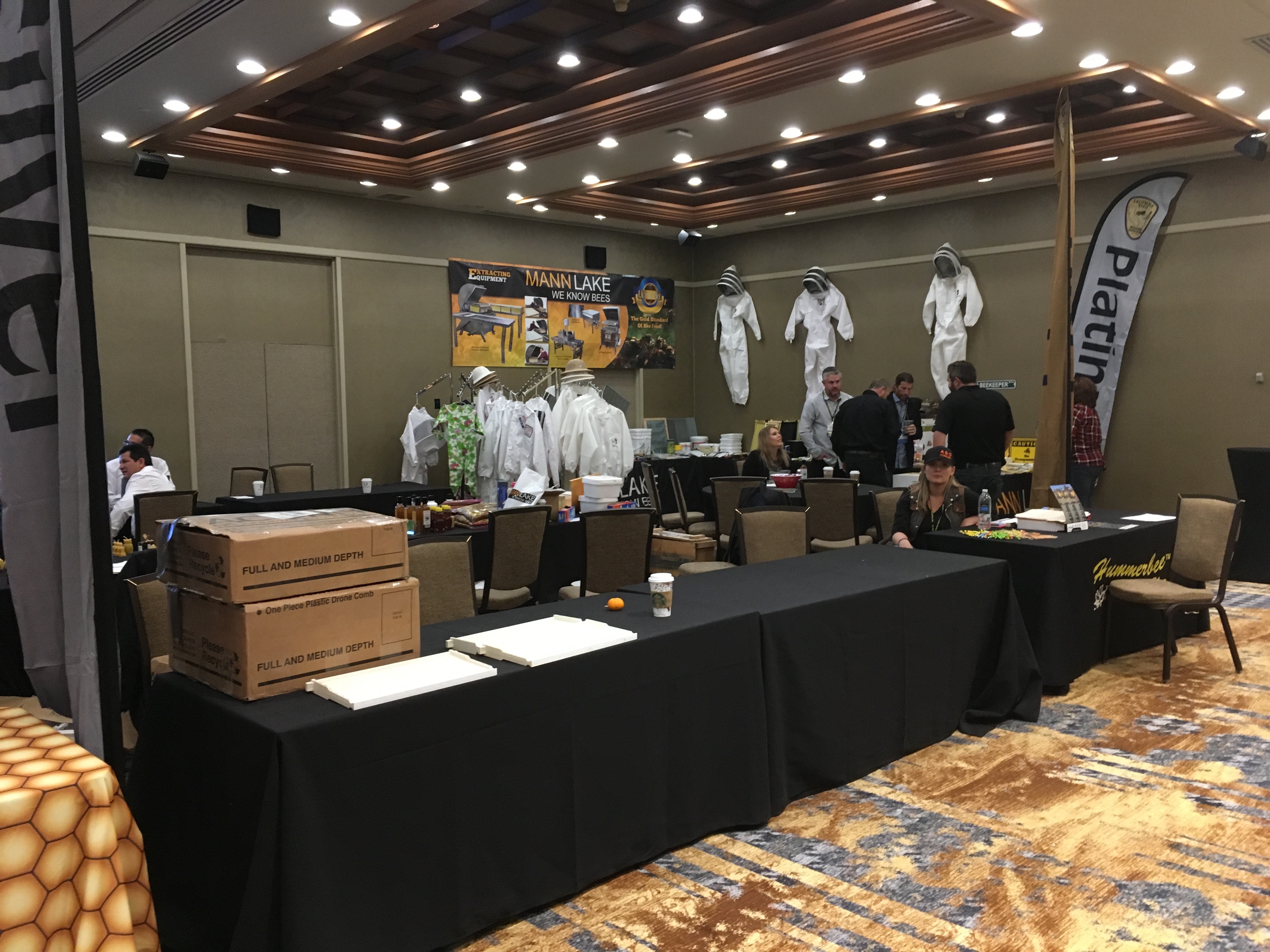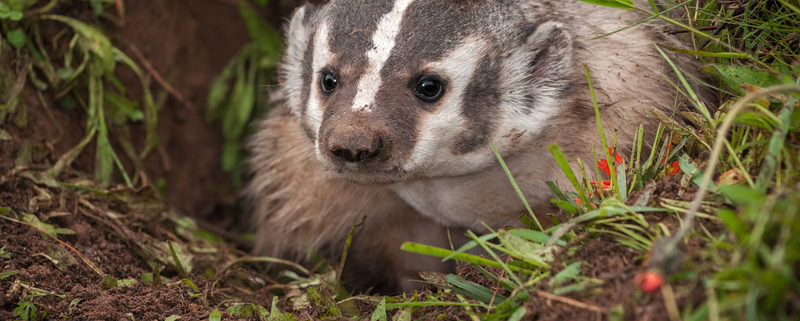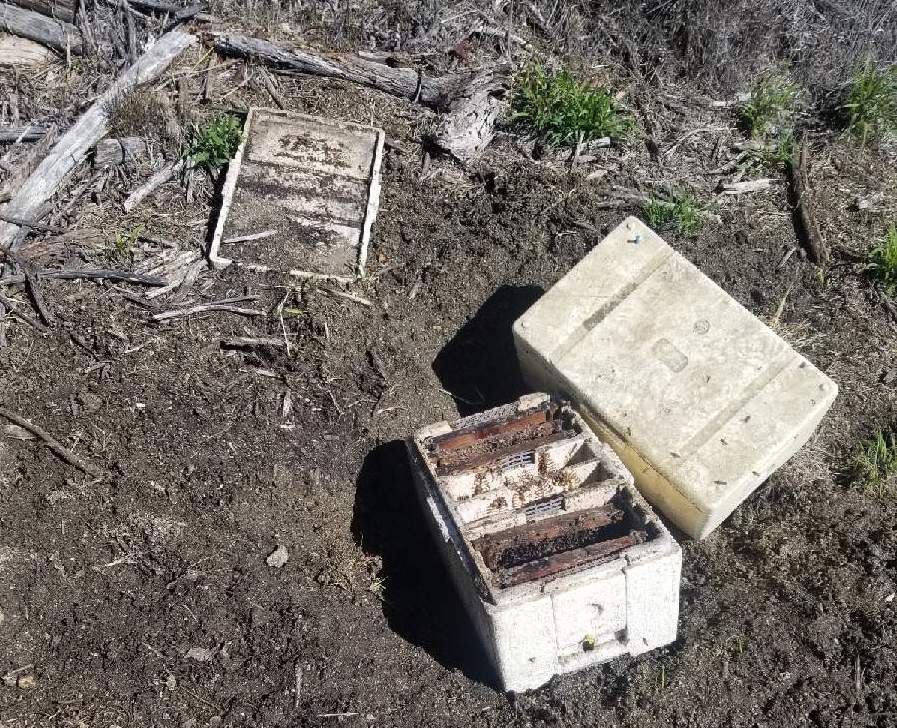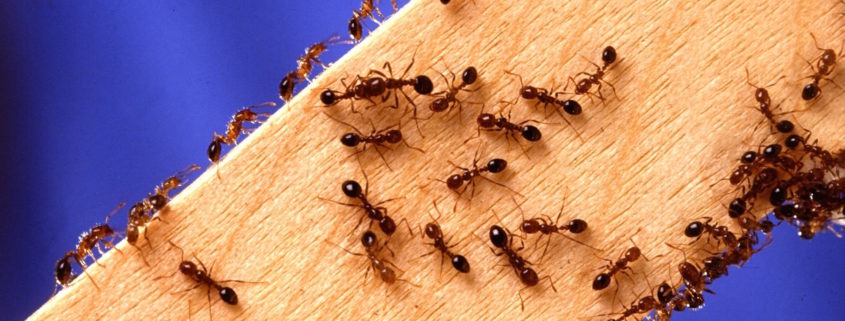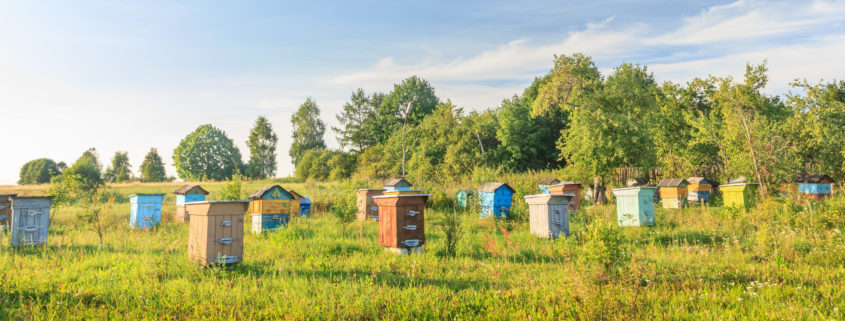Migratory Beekeeping
Some of our largest customers at Wildflower Meadows are migratory beekeepers. Migratory beekeepers in the United States begin each new year in California pollinating almonds. After that their paths diverge. Some move their bees to orange groves to produce orange blossom honey. Other beekeepers continue on to Oregon and Washington to pollinate cherries, cranberries, and apples. By summer, many of these same beekeepers can be found in the Great Plains producing clover honey. In the fall and winter, most of these very same beekeepers move their bees to warmer climates, like these here in Southern California, for over-wintering.
What makes all this possible is the existence of the vast United States interstate highway system, the availability of large flatbed trucks, and forklifts. Migratory beekeepers keep their bees on pallets, usually four to a pallet – most usually known as “four-ways.” The pallet doubles as a bottom board for the colonies, each of which are held in place by clips. When it comes time to move the bees, the beekeeper can easily pick up a pallet of four colonies at a single time with a forklift. Giant 18-wheel flatbed trucks are loaded with upwards of 400 colonies each. Depending on the distance of the move, the load is netted down, and the truckers head on their way to more abundant pastures.
While migratory beekeeping benefits the bees in certain ways – the bees always find themselves in the midst of flowering crops or fields – it is hard on them in other ways. The constant moving can lead to stress, which can result in queen losses. And, keeping bees on pallets and in close quarters is not necessarily ideal because it can lead to the spread of mites and diseases.
Migratory beekeeping can also be hard on the beekeepers, who spend large amounts of the year away from home and family. The life of a migratory beekeeper features many days on the road, staying in cheap hotels, eating fast food, and almost all of the of time worrying about planning and logistics.
Despite all this hardship, not enough praise can be offered to these brave beekeepers, and the contributions that they make to our food supply. Without migratory beekeepers and their invaluable pollination services, our crops would suffer greatly – and we would too. Migratory beekeepers are among the true heroes of beekeeping!
Photo courtesy of Allen’s Honey Company, Brawley, California, pollinators of almonds, melons, alfalfa and countless vegetable seed crops.

